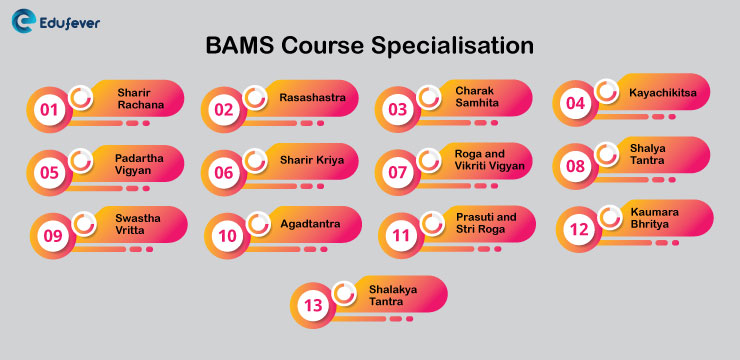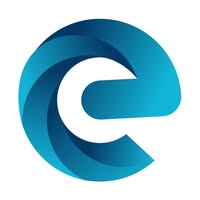BAMS Syllabus in India: Ayurveda is one of the ancient medical systems of the world. It traces its roots to the Vedic period. The demands for Ayurvedic doctors are nowadays heavy, and thus the scope for BAMS is vast. The main thing that differentiates Ayurveda from all other medical branches is the lack of side effects after treatment. People are inclined to make a career in ayurveda.
| NEET UG Counselling Guide 2025 | |
|---|---|
| State-wise MBBS/BDS Counselling Guide eBook 2025 | 📥 Download |
| MCC NEET UG Counselling Guide eBook 2025 | 📥 Download |
| AACCC AYUSH NEET Counselling Guide eBook 2025 | 📥 Download |
The Indian system of medicine, Ayurveda, evolved as a system with a rational and logical foundation. That its basic concepts were not re-examined in the light of the greater understanding of the human environment, that for centuries its methods of treatment underwent little change, and that there has been no addition to its literature for a long time are charges made against the systems by its critics”. Through this article, one can gain some clarity about the BAMS Syllabus in India 2024.
[Page Index]
Quick Facts
Here’s a summary of the BAMS course in India. Let’s have a look.
| Particulars | Description |
| Full Form | Bachelor of Ayurvedic Medicine and Surgery (BAMS) |
| BAMS Course Duration | 5.5 Years |
| Eligibility | 10+2 with 50% marks |
| Average Fees | INR 22.37K |
| Average Salary | INR 3.1 LPA |
| BAMS Syllabus | Sharir Rachana, Padartha Vigyan, Swastha Vritta, Rasashastra, Sharir Kriya, Agadtantra, Charak Samhita, Roga and Vikriti Vigyan, Prasuti and Stri Roga, Kayachikitsa, Shalya Tantra, Kaumara Bhritya, Shalakya Tantra |
| Career Opportunities | Medical Representative, Product Manager, Pharmacist, Resident Medical Officer |
| Recruiting Companies | Patanjali Ayurved Limited Dabur The Himalaya Drug Company Zandu Pharmaceuticals Works Limited Surya Herbal Limited |
What is BAMS?
BAMS stands for Bachelor of Ayurvedic Medicine and Surgery and is one of the medical degrees in Ayurveda courses. The course duration is five and a half years, with a mandatory one-year internship. BAMS integrates Ayurveda with the ideas of modern medicines, and pupils are taught a combination of both as part of the course curriculum.

Ayurveda is a traditional system of Indian medicine. Ayurvedic medicine is an example of a well-organized system of traditional health care, both preventive and curative, that is widely practised in parts of Asia.
Course Structure
The following is the course structure for the BAMS course:
| First Professional | 1.5 years |
| Second Professional | 1.5 years |
| Third Professional | 1.5 years |
| Internship | 1 year |
BAMS Syllabus in India 2024
The course of BAMS is divided into four professional years. The following is the BAMS Syllabus in India:
1st-year syllabus
The following is the 1st professional year BAMS syllabus:
| Padartha Vigyan and Ayurved Itihas (Philosophy and History of Ayurveda) |
| Sanskrit |
| Kriya Sharir (Physiology) |
| Rachana Sharir (Anatomy) |
| Maulik Siddhant Avum Astang Hridya (Basic Principles and Ashtang Hridaya- An ancient text of Ayurveda) |
2nd-year syllabus
The following is the 2nd professional year BAMS syllabus:
| Dravyaguna Vighyan (Pharmacology & Materia Medica) |
| Agadtantra (Toxicology) |
| Rasashatra (Iatrochemistry) |
| Charak Samhita |
3rd-year syllabus
The following is the 3rd professional year BAMS syllabus:
| Rog-Nidan |
| Swasthavritta |
| Prasuti Tantra Evum Stri Roga |
| Kaumarbhritya Parichaya |
| Charak Samhita |
4-year syllabus
The following is the 4th professional year BAMS syllabus:
| Kayachiktsa |
| Panchkarma |
| Shalya Tantra |
| Shalakya Tantra |
| Research Methodology and Medical Statistics |
Difference between MBBS and BAMS Syllabus
The following is the difference between MBBS and BAMS Syllabus:
| BAMS Syllabus | MBBS Syllabus |
|---|---|
| Anatomy | Anatomy + Shareera Rachana |
| Physiology | Pharmacology – Dravya Guns & Rasa Shastra |
| Biochemistry | Pharmacology – Dravya Guns & Rasa shastra |
| Pharmacology | Community Med. + Swastha vritta |
| Community Med. | Forensics + Agada Tantra |
| Forensics | Pathology + Roga nidana & Vikrti vigyana |
| Microbiology | Gen Medicine + kaya chikitsa |
| Pathology | Paediatrics + kaumarabhrtya |
| General Medicine | ENT + shalakya |
| Paediatrics | Opthalmology + shalakya |
| ENT | Surgery + shalya |
| Ophthalmology | Gynecology & obstetrics + stree roga |
| Surgery | Sanskrit, Padartha vigyana, Ayurveda Itihasa |
| Gynaecology and obstetrics | Half Ashtanga Hrudaya, Complete Charaka Samhita, Panchakarma |
BAMS Course Specialisation
The following are the specialisations from which pupils can choose to their specialisation:
- Sharir Rachana
- Padartha Vigyan
- Swastha Vritta
- Rasashastra
- Sharir Kriya
- Agadtantra
- Charak Samhita
- Roga and Vikriti Vigyan
- Prasuti and Stri Roga
- Kayachikitsa
- Shalya Tantra
- Kaumara Bhritya
- Shalakya Tantra

Top BAMS Colleges in India
Below we have mentioned the top 5 BAMS colleges in India.
| College Name | Location |
|---|---|
| Pankaj Kasturi Ayurveda Medical College, Trivandrum | Kerala |
| Vaidyaratnam Ayurved College, Thaikattussery, Ollur, Thrissur | Kerala |
| Pt. Khushilal Sharma Govt. Ayurved Mahavidyalaya Bhopal | Madhya Pradesh |
| Mahaveer Ayurvedic Medical College And Hospital Meerut | Uttar Pradesh |
| Institute of Ayush Medical Science Lucknow | Uttar Pradesh |
Books by other authors on Ayurveda
The following are the books by other authors that candidates can use as a reference for a better understanding of the concept:
- Ayurvedic Medicine: The Principles of Traditional Practice by Sebastian Pole
- Clinical Diagnosis in Ayurveda by Vaidya Vasant Patil
- The Book of Ayurveda by Judith H. Morrison
- Wild Remedies: How to Forage Healing Foods and Craft Your Own Herbal Medicine by Emily Han
- Ayurveda and the Mind by Dr David Frawley
- Ayurveda For Women by Robert Svoboda



